“If I could do it all over again, and relive my vision in the twenty-first century, I would be a microbial ecologist.
Ten billion bacteria live in a gram of ordinary soil, a mere pinch held between thumb and forefinger. They represent thousands of species, almost none of which are known to science. Into that world I would go with the aid of modern microscopy and molecular analysis.
I would cut my way through clonal forests sprawled across grains of sand, travel in an imagined submarine through drops of water proportionately the size of lakes, and track predators and prey in order to discover new life ways and alien food webs.
All this, and I need venture no farther than ten paces outside my laboratory building. The jaguars, ants and the orchids would still occupy distant forests in all their splendor, but now they would be joined by an even stranger and vastly more complex living world virtually without end.”
–E.O. Wilson, The Naturalist
Amen to that! Although it would seem that Wilson’s ten paces outside the lab might even be unnecessary… there’s a microbial jungle inside the lab too! Here are a few words about me, the microbes I love and our adventures with the Great Indoors at ASM2012 this year.
Entering grad school, my goal was to set out on an adventure microbial, stomp through the natural environment and explore the wonders of the microbial world as a swashbuckling microbiologist. Imagine this mash-up and you’ll have a sense for what I was thinking…
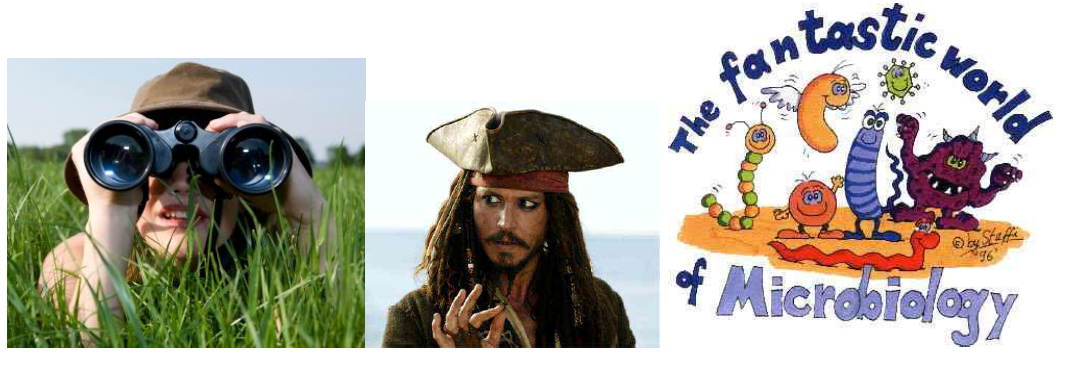
http://biology4.wustl.edu/levin/images/wee-beasties.jpg
Four years later, I’ve wound my winding way (with some stop-overs in the land of bioinformatics) to the slimy world of microbial aggregates and metabolic cooperation. While most of our knowledge about microbial metabolism comes from isolates and batch culture, the wild microbe rarely eats alone. Such cooperation based around shared metabolic products, known as syntrophy or “eating together,” expands the already enviable powers of microbial metabolism, allowing them to exploit otherwise challenging or inaccessible niches.
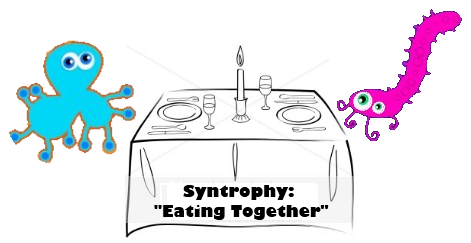
Syntrophs aren’t just a curiousity for those of us with a soft spot for microbial harmony. They drive global nutrient cycles (in the case of anaerobic methane oxidation) and are important industrial workers (in the case of wastewater treatment – e.g. here and here). In my current research, I’m working to characterize the syntrophic interactions within centimeter-sized pink microbial aggregates (affectionately known as “berries”) from the Sippewissett salt marsh in Massachusetts. These aggregates, the charismatic macrofauna of the microbes, provide an accessible system to use culture independent tools to elucidate complex microbial interactions. During the recent ASM meeting in San Francisco, I presented work on the pink berry project (and that of the many wonderful collaborators who’ve made it possible!).
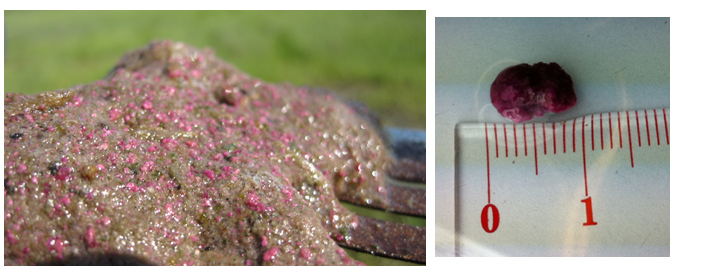
(Left) Berries in marsh mud on a spatula. (Right) A whopping ~1cm diameter berry!
The ASM General Meeting was an all-you-can-eat buffet of hot topics and exciting research in microbiology. As a big fan of microbial diversity, I just adore this huge meeting that runs the gamut of diverse microbiology! Recapping all the fun that was stuffed into four short days, I put together a list of all the talks sessions and posters I went to. In looking at the word cloud this made, clearly my tastes have a decidedly “good bug” – marine microbiology bent…
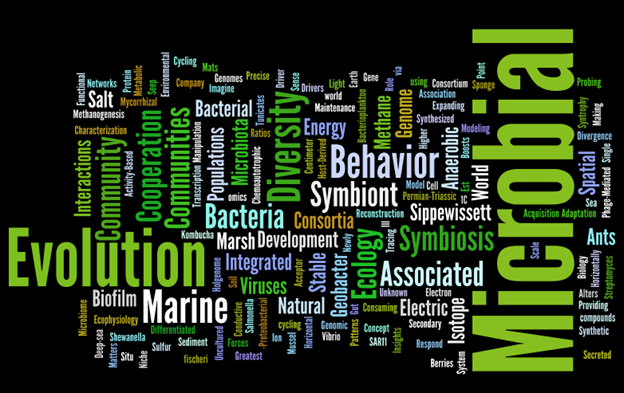
But one of the things that I like the best about this conference is how you find yourself in sessions that, while at first seem to be wild-tangents to your research interests, and end up getting your wheels turning about new and exciting things.
Checking out the Great Indoors session chaired by our fearless lab leader, Dr. Jonathan Eisen (more on session here), a few things stuck in my mind that I’ll leave you with as ramblings, food for thought and finally some Talmudic questions (in tradition of one of my very favorite microbiology bloggers, Elio Schaechter at Small Things Considered).
Like any ecosystem, the built environment must be filled with a tangled network of microbial interactions, invisible to our eyes (and many of our methods of inquiry!). We live nestled in a bed of microbes, a fact which many folks still find disturbing. As an outdoor microbiologist who studies friendly bugs, I’m fervent (maybe even reactionary?) “germo-phile” and find it reassuring that microbes not only live in and on us, but around us too!
As such, I find the media coverage of some built environment studies a bit disheartening, such as the germophobe media headliners from a study on the bacteria found on hotel room surfaces. While such studies are very valuable, identifying threats and improving health codes, I find it a bit sad that the media often reduces coverage to sound bites that take away little more than “BACTERIA: BE AFRAID!” when there exists around us such an amazing, usually friendly, microbial world.

http://www.zeitnews.org/images/stories/bacteria.jpg
What’s the best way to balance the public perception of our studies of microbial threats with an understanding of our natural microbial ecosystem? Communication is the obvious answer, but there’s clearly still lots of work to be done in being a “good bug” advocate. I found it interesting that Jonathan Eisen’s two cents on understanding threats within our microbial context was relegated to a small blurb sandwiched between much microbial fear-mongering in recent media coverage.
I hope that outreach work on the built environment can help dispel some of this, as human microbiome outreach is changing the public perception of the bugs that keep us healthy — like the upcoming public-education event hosted by ASM in DC. Good bugs and free beer? Wish we were closer, sounds like my idea of a great night out!
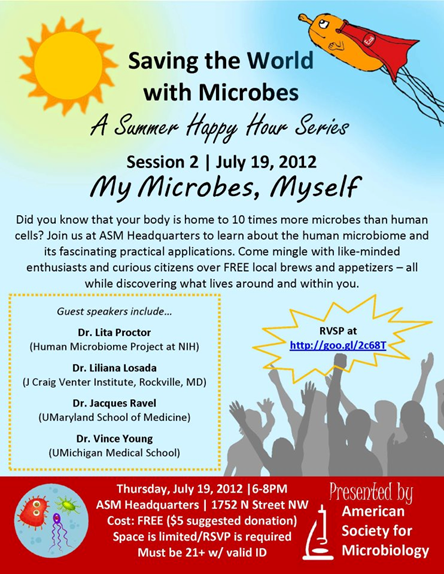
Despite the fact that (sadly) most of us spend the vast majority of our time indoors, we’re just beginning to understand the “Great Indoors” around us. Much of the work on the built environment right now seems to be in the exploration-phase — the “who’s there” baseline of the microbial ecology trifecta (“who’s there?”, “what are they doing?”, “how are they doing it?”). As we assemble a microbial census of the Great Indoors, and begin to dig deeper, I start to wonder about the surprises that the microbes of the indoor-world will have for us. Are there indoor-only syntrophs waiting to be discovered? Where might they be? Who are the players and what drivers their associations? It’s an amazing microbial world out there, and it seems, in here too!
———————–
UPDATE February 2019
Storify is no longer in existence. Fortunately we were able to convert the Storify summary to one via Wakelet.
Wakelet details:
- Link to Wakelet Site: Session at #ASM2012 on The Great Indoors: Recent Advances in the Ecology of Built Environments
- PDF of Wakelet
———————–
Old Storify links: